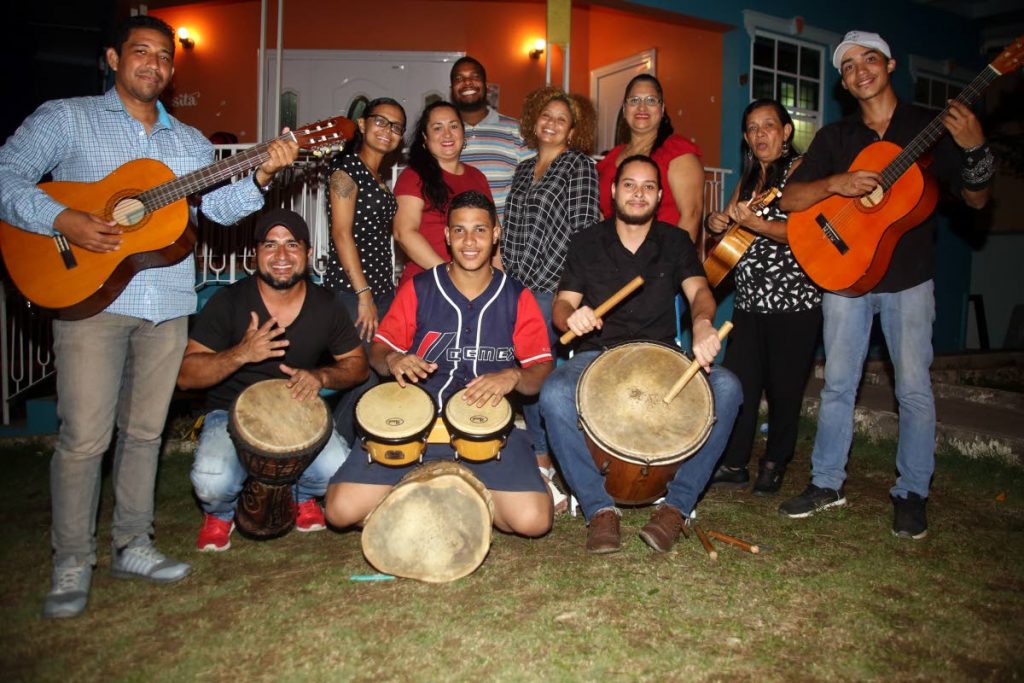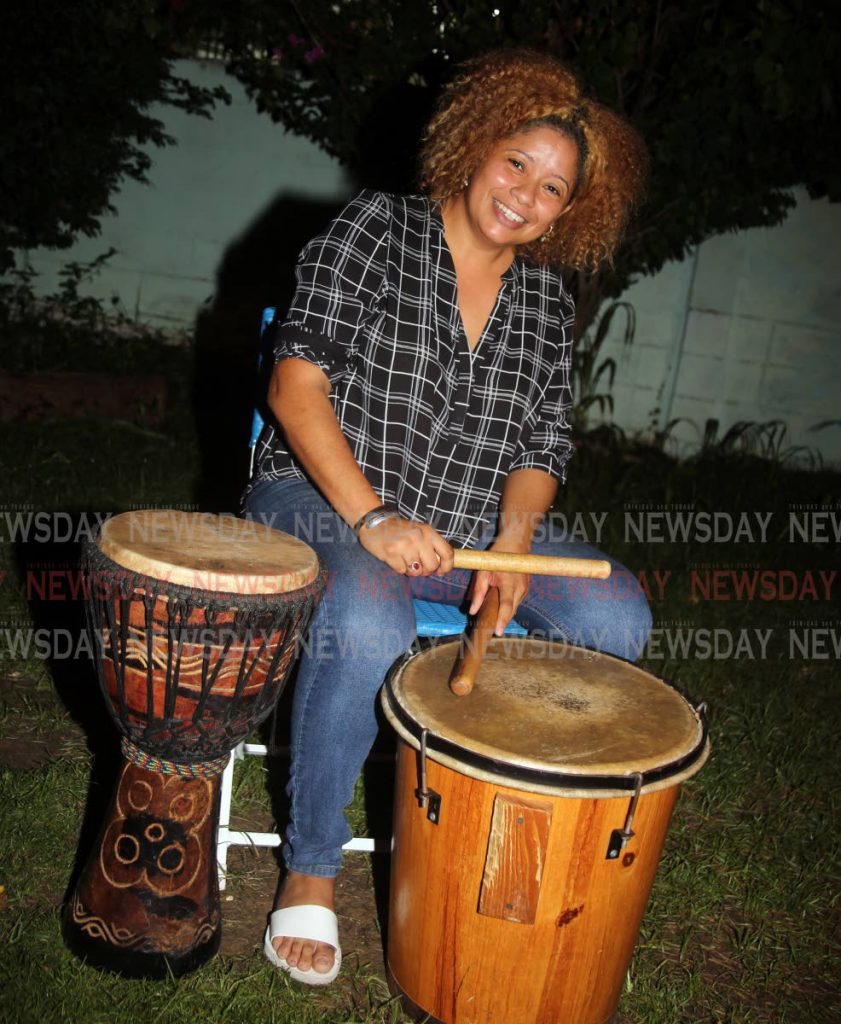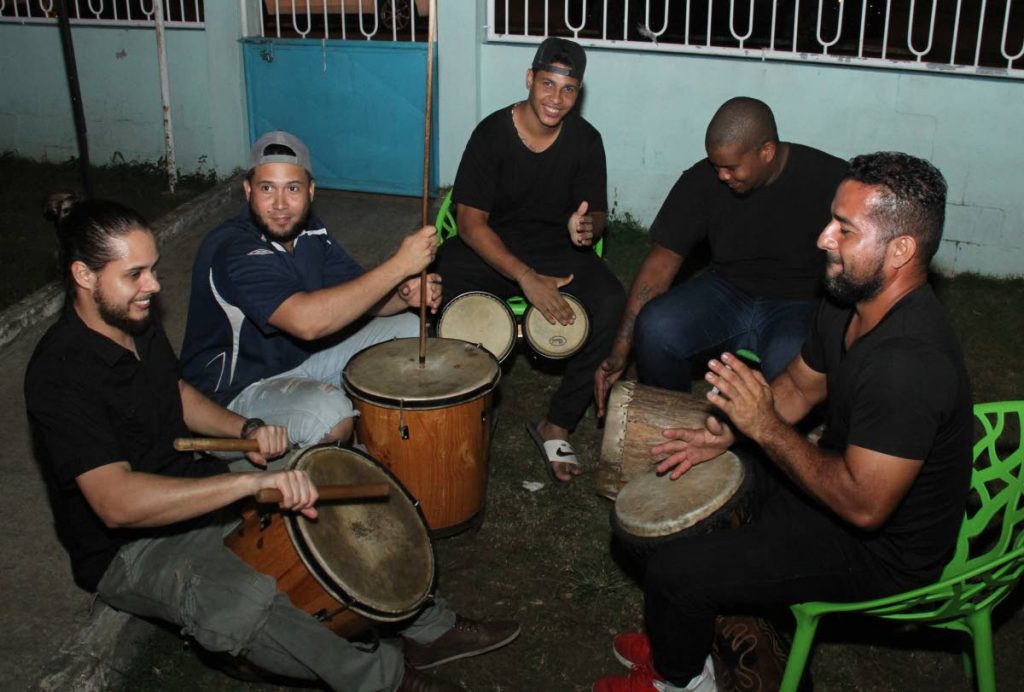Parranda with African mix

The parranda is a genre of Venezuelan folk music that is played mainly in December in church or at Christmas parties, adding a festive touch to the season. It is a combination of traditional carols, percussion instruments, bagpipes, the violin, the cuatro, the clarinet, the mandolin, the furruco, the maracas and the guitar.
A version of the Venezuelan parranda is played in TT through the Venezuelan Heritage group, formed in Arima at the Hispanic Cultural Centre. The music is a mixture of Venezuelan, African and TT influences.
The drums of the parranda have its origins in the African slaves who settled along the coasts of Venezuela.
“Our Venezuelan Heritage group has an important and striking mix of drums, which make a special sound to the parranda we show to the public,” explains Andreina Briceno, director of the centre.

One of the main percussion instruments is la tambora, a membranophone of African origin and with which the ringing of the parranda begins at each presentation. Its box is made of wood and has a cylindrical and slightly conical shape. Open at the bottom end, it has a dry leather membrane on the top. Completely stretched and smooth, the leather is struck by the performer, who uses two cylindrical, wooden drumsticks.
"La tambora gaita is an Afro-Venezuelan tradition of the peoples of the south coast of Lake Maracaibo (western Venezuela), which consists of a fixed refrain that gives its name to the piece, in quatrains or sextets with different syllable combinations," he told Sunday Newsday.
The playing style used in Venezuela, is also used today by several parang groups of in TT.
He said the instrument is used with the furro or furruco, also originally from Africa and called zambomba.
https://www.youtube.com/watch?v=v1YskYTZxI0&feature=youtu.be
It is a membranophone formed by a cylindrical wooden body. It has a single patch of goat's leather on one of its sides, which has a waxed cane attached.
"When rubbing this cane with your hands, the vibration moves to the patch producing a sound similar to the roar of an animal," said Winston Parra, who plays the furro in the group.
Another drum of African origin used in this TT version of parranda is the cumaco, which has its roots in the Windward region in Venezuela. It is placed on the floor, the musician sits on it and hits the leather with one hand, while uses the other hand to hit the wood with a stick.
Anthony Greenidge, who oversees the Venezuelan Heritage group, explained that one or more people can sit on this drum. He said it comes in two sizes – male and female.

The band also uses the bongo, an Afro-Cuban instrument, consisting of a set of two small drums made of slightly truncated conical wood, one smaller than the other.
"It is struck with the hands, for which it must be placed between the knees, sitting," explained Giuseppe Sutil, the group's bongonser.
Completing the mixture of African, Venezuelan and Trinidadian percussion, the djembe or yembe, also from Africa, is a percussion instrument belonging to the family of membranophonic instruments.
https://www.youtube.com/watch?v=3ZjWctyqCKg&feature=youtu.be
“As a result of the differences in shape, wood density, internal engravings and skin, there is a wide range of tones that can be emitted. Hitting the skin near the centre produces more serious notes, hitting it near the edge produces sharper tones. In a well-tuned djembe, you get deep, medium and sharp differentiates,” said Angel Betancourt. It is one of the most used drums in soca and the calypso.


Comments
"Parranda with African mix"